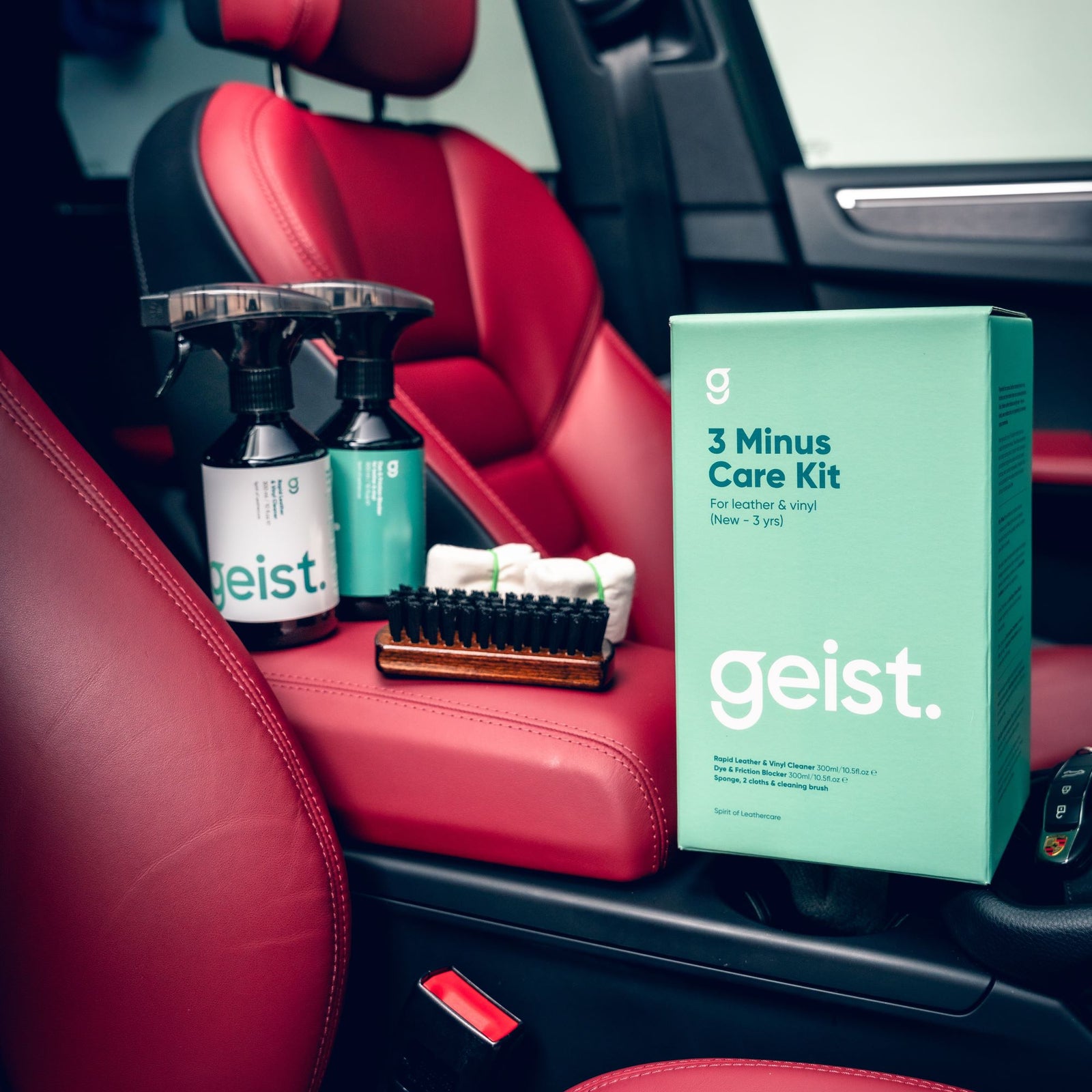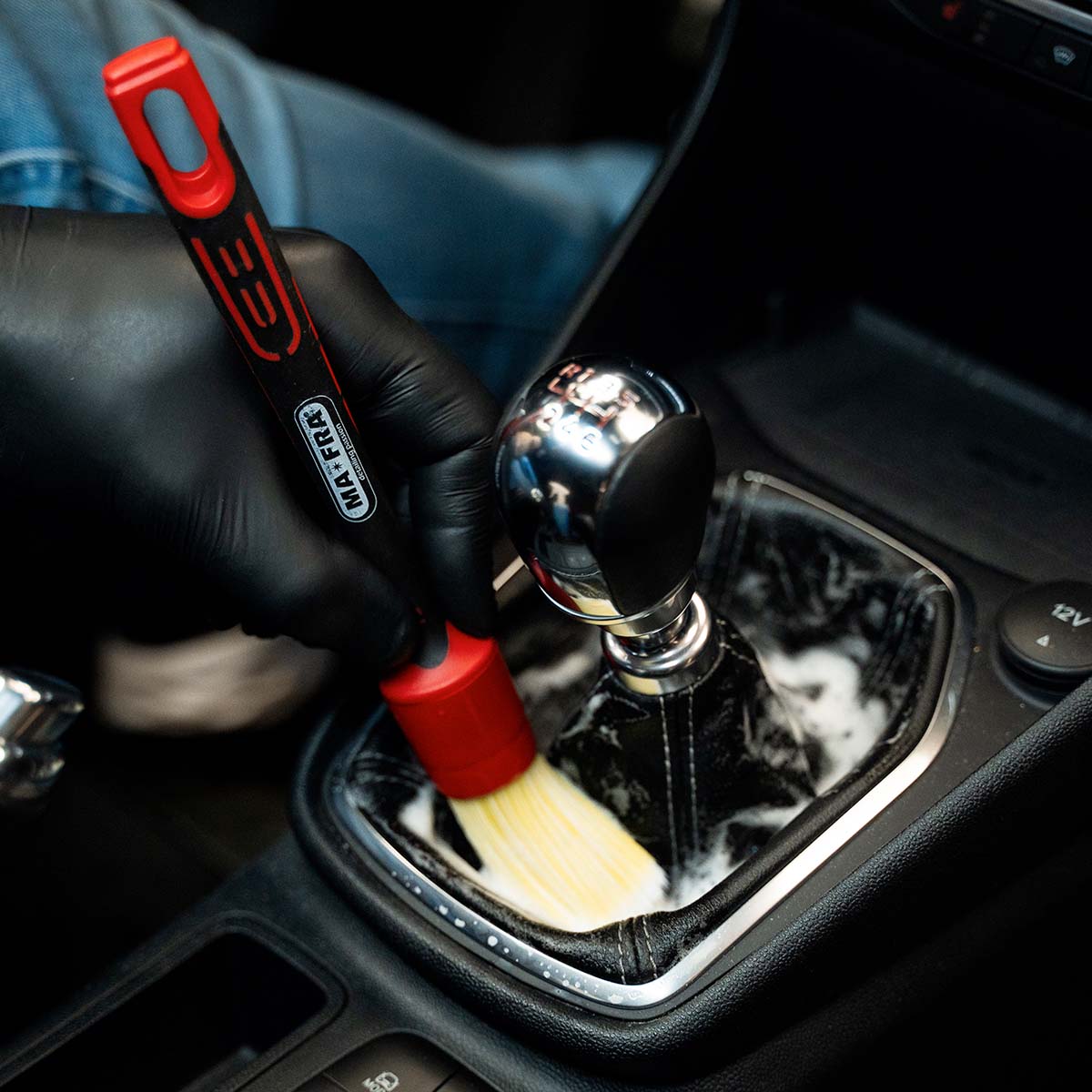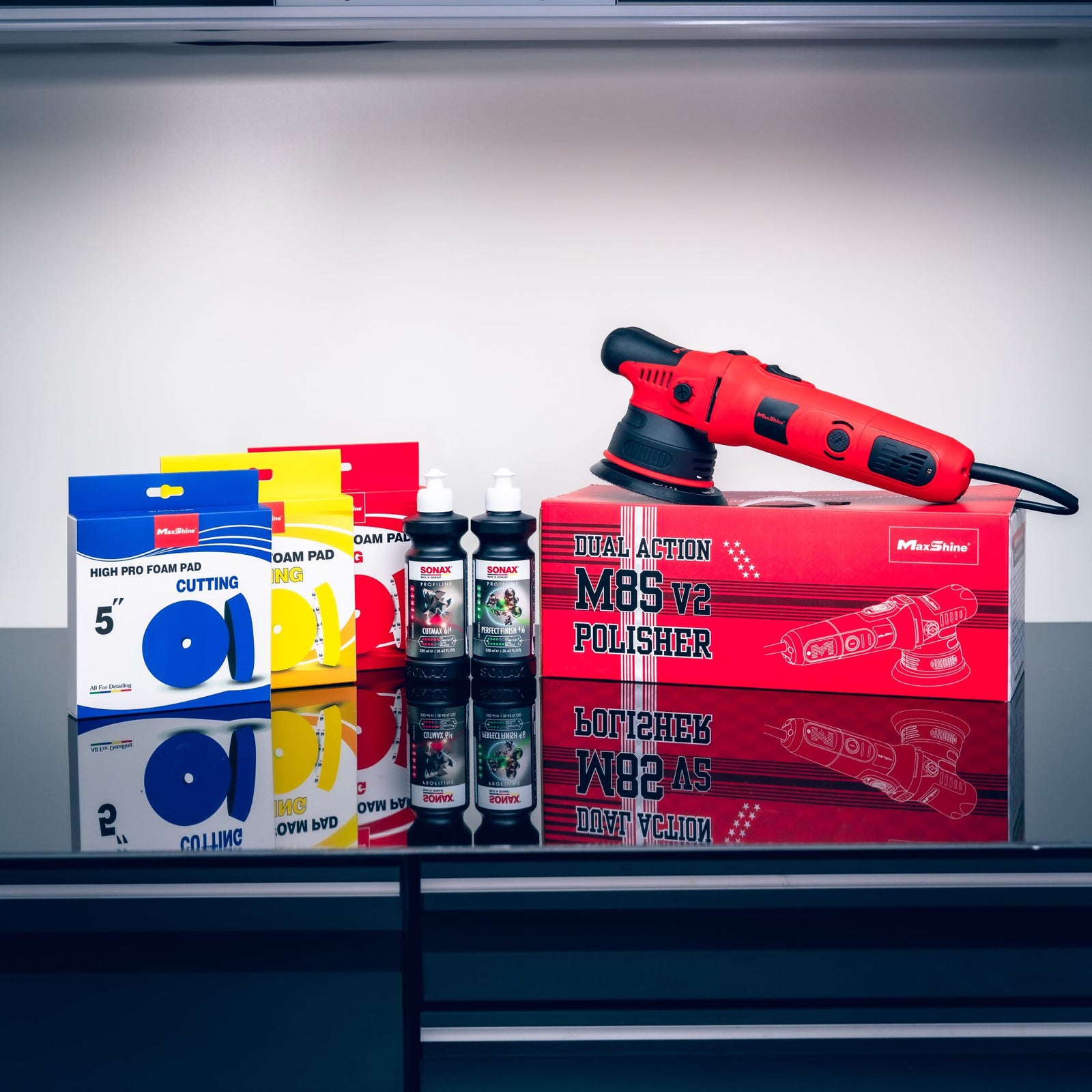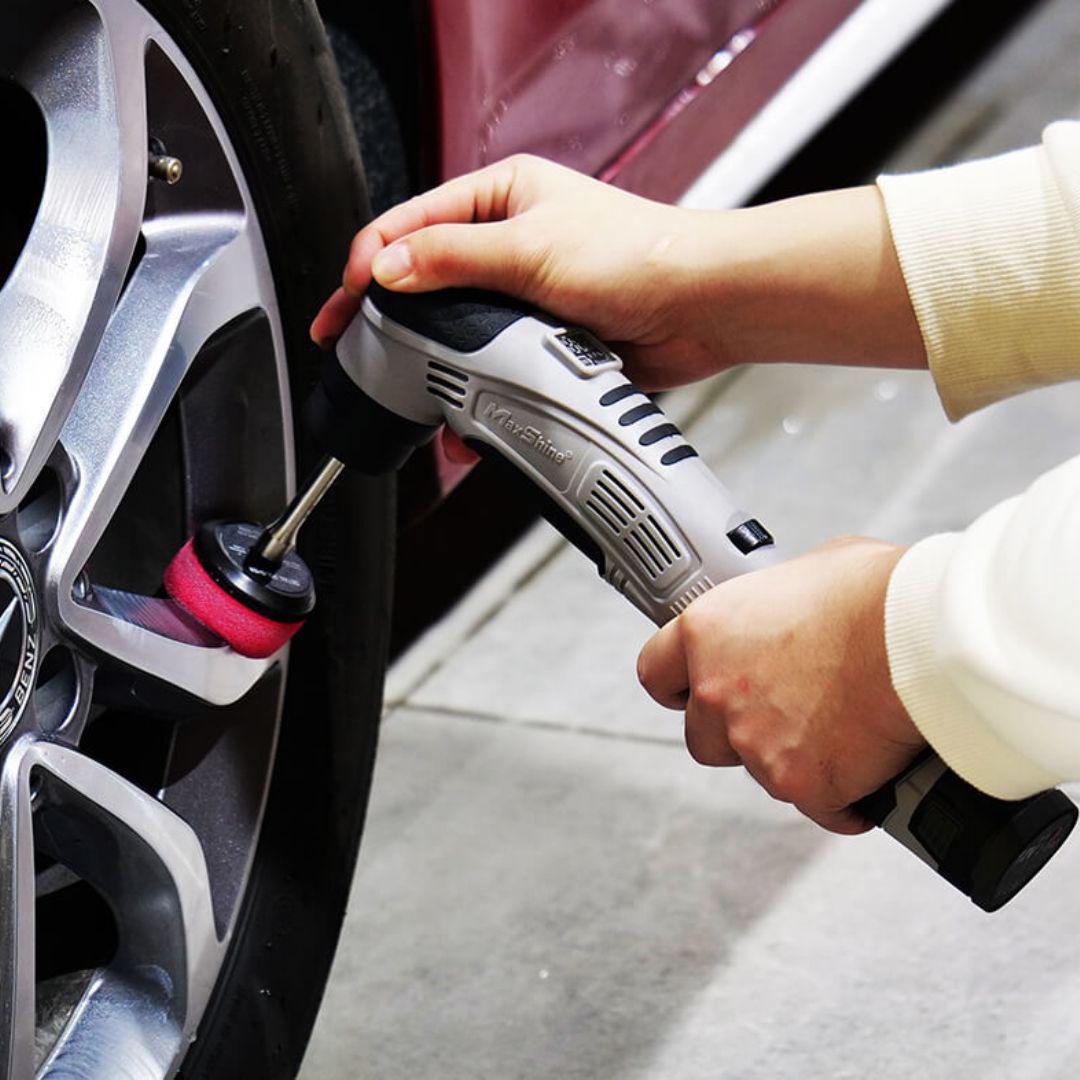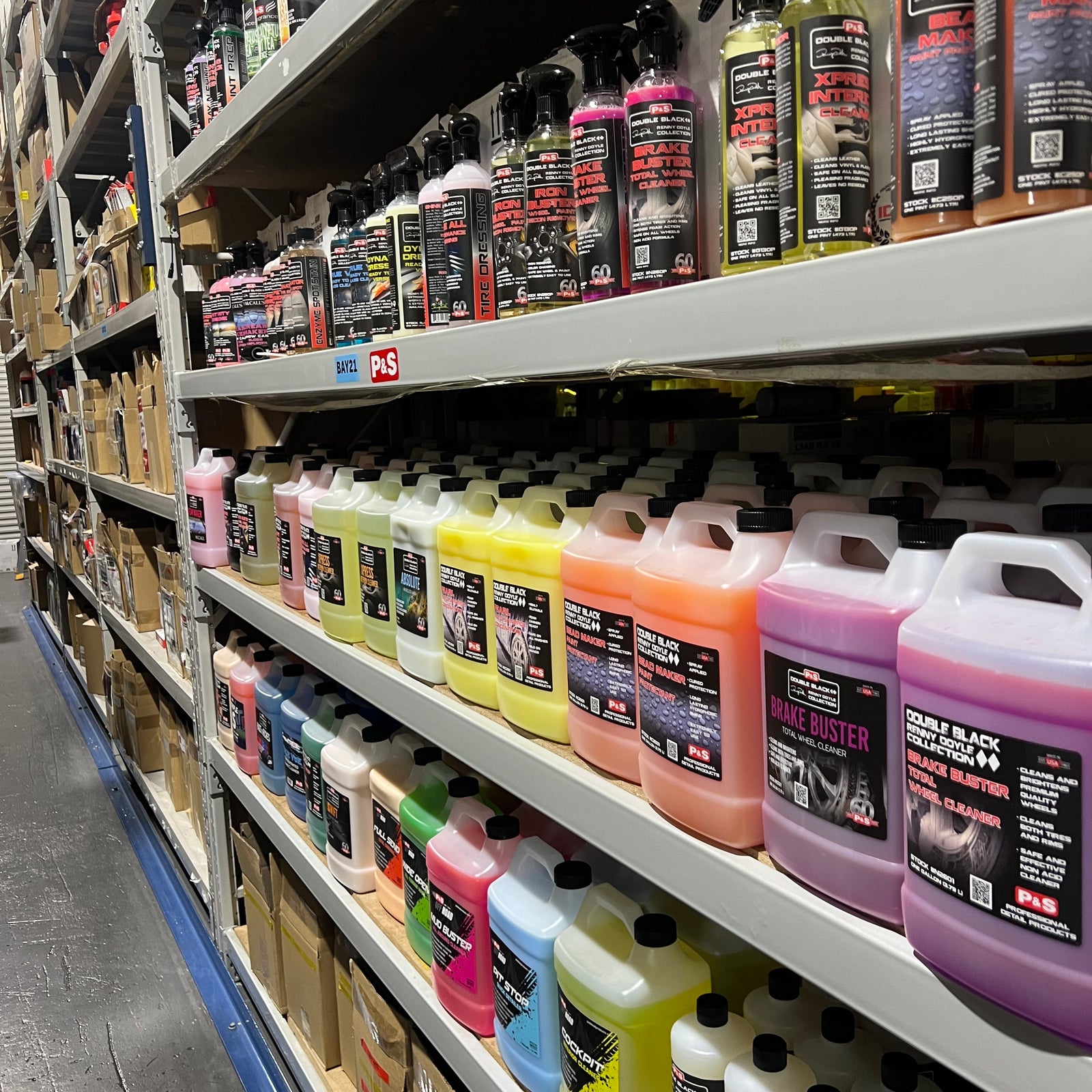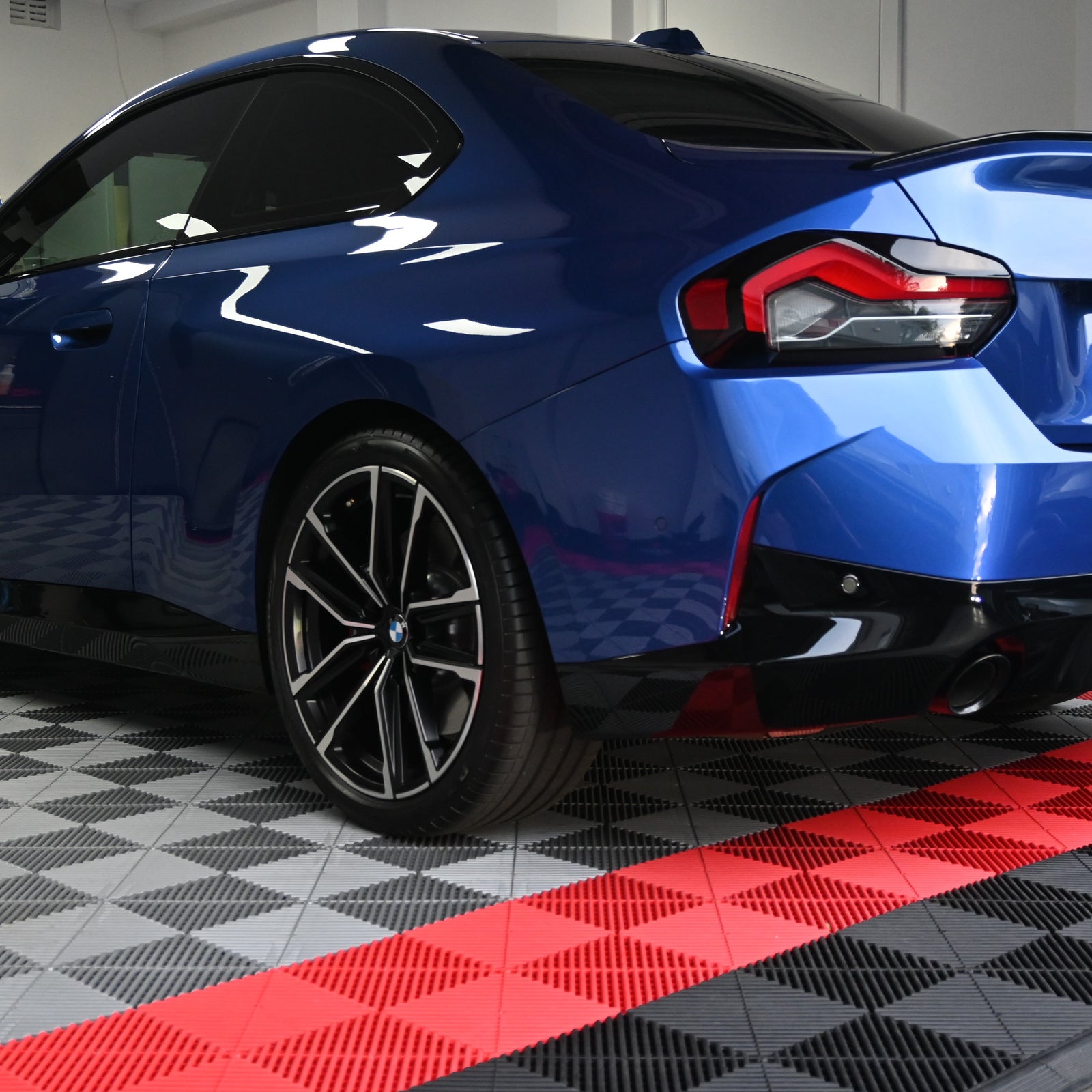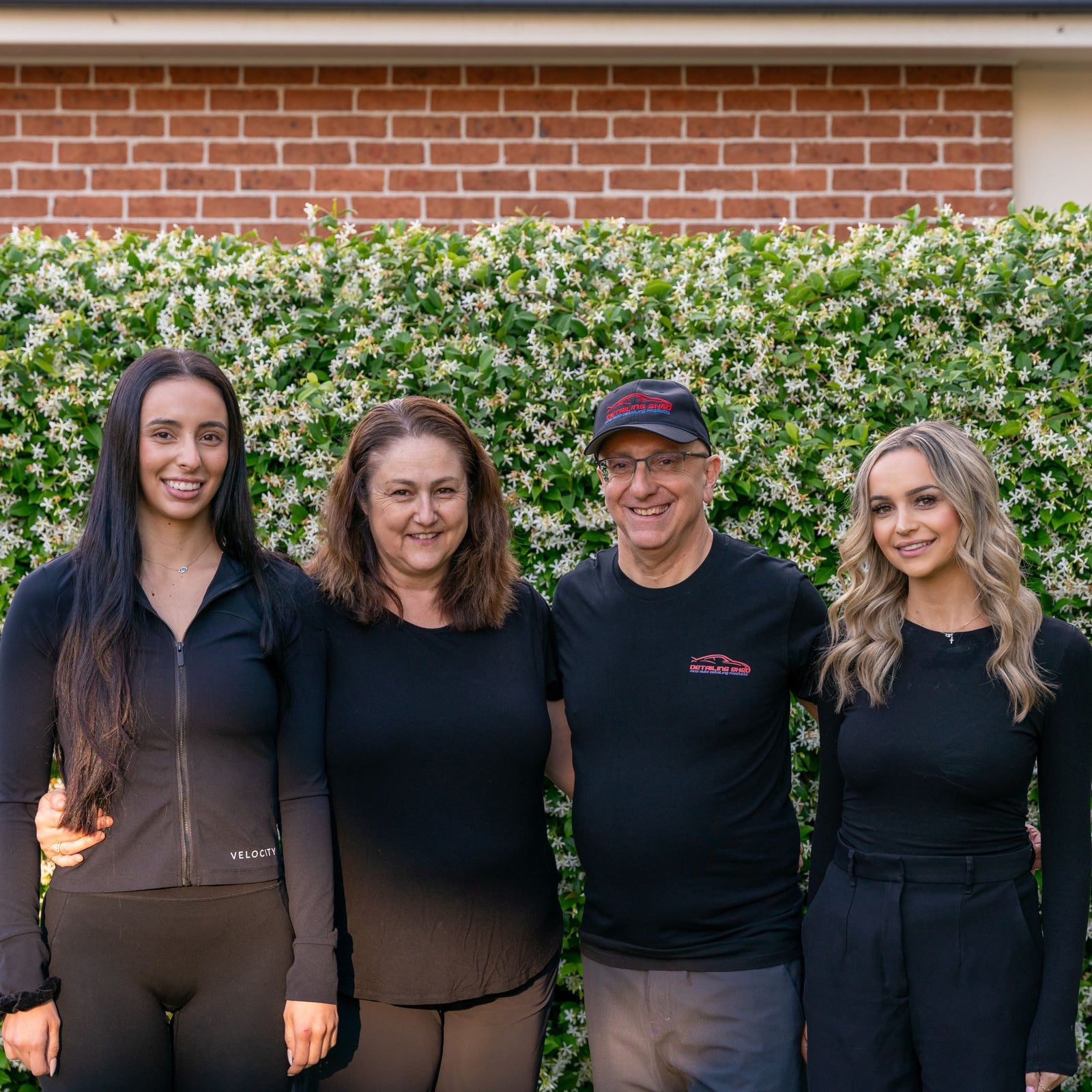From carpets to seats, glass to screens, dashboards to door trims, in this article we will describe a step-by-step process that we use to keep our interiors clean and up to spec.
Why Is Interior Cleaning and Maintenance Important?
Considering how much time we spend in our cars, it only makes sense to have your interior looking, feeling, and smelling fresh. Regular cleaning and maintenance not only makes the space nicer, but also helps protect and extend the life of the various interior surfaces in general. The byproduct of that is stronger resale when it comes time to sell.
The best way to approach interior cleaning and maintenance is regularity. Keep on top of it and you will eliminate the need for “sledgehammer” cleaning techniques and products. In other words, a little, but often.

Tools & Supplies
Towels: You will need three different towels for interior cleaning:
- A plusher towel for gloss/delicate surfaces such as The Rag Company Creature Edgeless.
- A lower pile towel for more generalized cleaning such as The Rag Company Edgeless 365.
- You will also need a handful of glass-specific towels, such as The Rag Company Dry Me A River. This is important to reduce streaking and linting.
Applicators:Used for applying interior dressings or protectants. We recommend Maxshine Exterior and Interior Applicator.
Brushes:
- General Cleaning Brushes - A firmer boar's hair brush for less delicate surfaces. A softer synthetic bristle brush for more delicate areas, especially good at dusting air vents and gloss trims.
- Carpet/Textile Brushes - For this task, you want a medium bristle brush, able to lift and dissolve dirt. We recommend Maxshine Leather Cleaning Brush or Wheel Woolies Bristle Upholstery Brush for this.
- Leather Cleaning Brushes - While some of the above brushes are fine for leather, we prefer to use a dedicated brush for leather and vinyl surfaces which Maxshine Car Cleaner Brush and Geist Leather & Textile Cleaning Brush would be good for.
Scrub Pad: Use a scrub pad on areas needing that little bit extra, say neglected steering wheels, muddy plastic sill panels, or armrests. These offer a little more cut through while remaining safe on most surfaces, avoid gloss trims though. The Maxshine Interior Scrubbing Sponge and Leather & Vinyl Scrub Brush are awesome.
Miscellaneous: Some of these are more “luxury” items but are helpful to have on hand.
- Small Brush Set (Ideal for cleaning pedals)
- Pet Hair Remover (Pet hair is a nightmare, this makes it easy!)
- Detail Factory Tyre Brush (this is brilliant on rubber floor mats and liners, trust me!)
- Stoner Reach & Clean Tool: Such a simple but effective way of dealing with hard to reach windscreens. A must for any Mustang owner.
Interior Cleaners: Interior cleaners are used when dealing with moderate to heavy-duty cleaning duties. The importance here is choosing a product that is pH neutral, ensuring that any cleaning you do is safe, but effective. An interior cleaner can be used across multiple surfaces including leather and vinyl, however you can reserve these products for cleaning various plastic surfaces. We recommend GTECHNIQ I2 Tri-Clean, P&S Xpress Interior or Koch Chemie Pol Star PO.
Interior Quick Detailers: These products have become quite popular over the last few years, offering just the right blend of cleaning ability and a small amount of UV protection. These are great for regular/weekly use between more intensive cleaning sessions. Koch Chemie ASC is a great option. We have also been very impressed with P&S Swift.
Carpet, Cloth & Textile Cleaners: Most car interiors come with leather/vinyl trim these days, but it's still good to have a carpet/cloth cleaning product on hand. Koch Chemie Pol Star is great for this because it can be diluted to suit, is pH neutral and able to be used across multiple surfaces including leather, Alcantara/suede, plastics and carpet. Sonax Upholstery Cleaner is another great option.
Interior Protectants: While interior detailers contain some UV protection, interior protectants are more substantial. If you park your car outdoors a lot in summer, these products are a must. Koch Chemie Top Star is a good product for this.
Leather Cleaners: Car leather interiors are often a blend of natural and synthetic (vinyl/vegan) leathers. As such, it’s important to choose products that cater to this, meaning they are safe to use on natural leather, but still effective at cleaning synthetic materials. Again, pH neutrality is important, so something like Koch Chemie Pol Star is a great choice. Geist leather cleaners have been designed for user and material safety.
Leather Conditioners: These products need to cater towards mixed materials, with the goal of protecting, enhancing and nourishing leather and leather-like surfaces. Geist Leather Conditioner excels here, as does Koch Chemie Leather Star.
Glass Cleaners:You want an ammonia free, alcohol-based product here. These are safer on window tinting and plastic interior surfaces. Stoner Invisible Glass and Bilt Hamber Traceless give the best results.
Air Freshener’s and Odour Eliminators: An air freshener adds a scent to an interior, an odour eliminator does just that, removing the odour rather than covering it up. Air fresheners are naturally a personal taste thing, odour eliminators are different in that while they do have a certain scent, their reason for being is to neutralize, of which Koch Chemie Fresh Up and P&S Finisher would be worth looking at.
How To Clean Your Interior – The Process.
- Remove the floor mats and any larger debris or litter. For carpet mats, shake them out and vacuum.
- Vacuum the carpets, moving the seats forward to gain sufficient access to the rear footwell. With the vacuum in one hand, have a soft brush in the other to agitate dust from cracks and crevices, especially air vents and door trims, sucking the dust into the vacuum during the process. This method also works on gloss trim and leather seats. Having a couple of different vacuum attachments is crucial here, allowing you to swap to suit different areas and surfaces. You may also use the pet hair brush to gather hair into a point, then sucking it up with the vacuum.
- Using an interior cleaner and a towel, start working your way around the interior. Starting with the dashboard and door trims, spray the product into the towel before wiping, then work your way down to the centre console, sills and footwell areas. If your interior is dirtier, then you can spray directly onto the surface and use a scrub pad or brush to agitate before wiping. Be careful where you spray these products, making sure to not target buttons and switches. Use an interior cleaner for dirtier interiors, otherwise an interior detailer is best suited for weekly maintenance.

- Now focus on your seats.
Leather and Vinyl - for a more intense clean, spray a leather cleaner onto a leather brush or directly onto the surface, agitate with the brush and wipe with a towel. Once clean, apply your chosen leather protectant. If your leather is already somewhat clean and protected, then give these surfaces a quick wipe with a damp towel or your interior detailer. For more information on how to clean leather seats click here.
Cloth and Alcantara – in most cases, you are maintaining these with a vacuum, but if you need to deal with stains, then apply a small amount of upholstery cleaner, agitate with a brush, then gently wipe the area with a damp towel. It’s very important to use the damp towel to remove the emulsified dirt/ product residue from the fibres.
- (Optional) Apply a protectant to the various plastic surfaces using a towel or microfiber applicator.

- With the interior clean, now focus on the glass. Best results are achieved with specific glass or waffle weave towels. For interior glass, spray the glass cleaner directly onto the towel and not the glass itself, this avoids getting glass cleaner on freshly cleaned surfaces.
Wipe the glass, then follow up with a clean, dry towel to produce a streak free finish. For grotty/neglected glass, flip or swap out your towels often to avoid smearing/transferring grime from window to window. You may also find repeating the process necessary. Wipe the rear vision mirror, gauge cluster and infotainment screens at this step.
-
Refit the floor mats and mist your chosen air freshener or odour eliminator on your carpets/mats.
Tips, Tricks and What to Avoid
- Avoid using an all-purpose-cleaners (APC). These products are typically alkaline and offer a level of cleaning ability that is not necessary for interiors. Prolonged use of APC’s can cause premature wear and potential long-term damage.
- Choose cleaners and protectants formulated for interior surfaces.
- Rinse-less wash products can also be used for interior cleaning and maintenance, offering a super safe and gentle cleaning solution for plastic and leather/vinyl trim. We often use Optimum No Rinse as an interior quick detailer, offering just enough cleaning/dusting ability without stripping out any protectant that we may have previously applied.
- Compressed air can be helpful in dislodging dust, debris and sand from hard-to-reach areas. It can also assist in lifting stubborn sand out of carpet and floor mats, allowing it to be more easily removed with the vacuum.
- Another helpful tip is to use an anti-static product like P&S Paint Gloss as a “vacuum aid”. While Paint Gloss was designed for exterior surfaces, it works wonders here on stubborn carpets.
- Have a good supply of towels, you will use more than you think, especially if dealing with neglected interiors and glass.
- Never attempt cleaning glass while it is hot or warm to touch. The result will be a foggy, smeary mess. For best results, glass should be cool or cold to touch before attempting to clean.
Q&A
Can I use household interior cleaners?
No. Household cleaning products are too harsh for car interiors, especially vinyl and plastic surfaces. Car-specific cleaning products have been designed to be safe and effective, meaning that you get the best results possible without causing damage.
How often should I clean my leather seats?
This is very usage dependent. On average, leather is best cleaned and protected every 4 to 6 months. If your car is a weekender, that would extent to every 12 months. For a vehicle getting heavy use, then every 2 to 3 months would be best.
Why do I always get streaks in my glass?
In this case, look at the type of towels you are using, the temperature of the glass and the glass cleaner in question. Always clean glass when it is out of direct sunlight and cool to touch, use a dense/low nap towel and an alcohol-based glass cleaner. If the glass is dirtier than usual, repeat the process with a clean set of towels.
Can I apply a dressing to rubber floor mats?
Unless heavily diluted, regular plastic/rubber dressings tend to create a slick finish that is not especially safe underfoot.
Koch Chemie Guf on the other hand was designed for this exact application, able to dress and enhance rubber floor mats without creating a slick or slippery finish. Best applied to clean, dry surfaces.
Effortless Car Interior Cleaning and Maintenance
Cleaning car interiors can be time consuming, but with the right products and tools, getting your interior clean, and then maintaining it, has never been easier.
Good luck and happy detailing.

